Read more
(Malines, c. 1586, Antwerp, 1643)
Saint Francis in Meditation with Brother Leo, ca 1626
Oil on canvas
123 x 159.5 cm
Inscription lower left: 486.
Track of inscription lower right: [214 ?]
Provenance :
– Probably sold by the artist in 1626 to the Antwerp dealer Jehan van Mechelen.
– Madrid, collection of Diego Messia, Marquis of Leganés (Madrid, 1580 –1655), politician and military figure, since 1637 in the Palacio San Bernardo [no. 272 ?].
– Madrid, collection of the Count of Altamira, passed by inheritance, inventory of the Palacio San Bernardo, 1726 [no. 272 ?].
– Madrid, collection of Vicente Pio Ossorio de Moscoso y Ponce de León, Count of Altamira (Madrid, 1801–1864), passed by inheritance, post-mortem inventory, 13-14 March 1864, no. 486. – Madrid, Álava Family Collection. – Madrid, private collection until 2014.
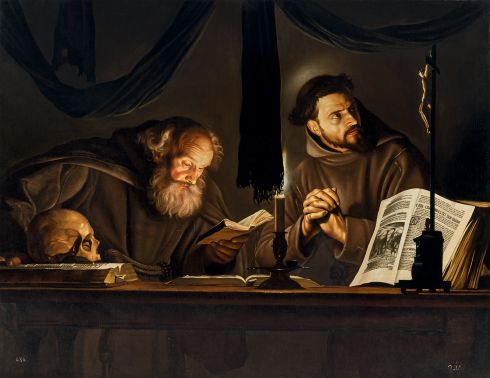
A MAGNIFICENT NOCTURNAL WORK BY THE FLEMISH CARAVAGGIST ADAM DE COSTER
Like his Caravaggist colleagues Gerard Seghers and Theodoor Rombouts, in Antwerp Adam de Coster was highly respected by his peers: Van Dyck made a portrait of him for his famous Iconography, in which he is described as a “pictor noctium”.1 The oeuvre of this still little-known painter currently comprises some thirty items attributed to him on the basis of his sole certain work, the Backgammon Players, which survives in an engraving by Lucas Vorsterman (fig. 1).2 De Coster made a specialty of nocturnal scenes in which half-length figures are lit by an artificial, partially masked light source. In addition to Singers (Vaduz, fig. 2), Musicians, Gamblers and Smokers, he addressed such religious themes as The Denial of Saint Peter (fig. 3, 4). Admitted as a master to the guild of Antwerp painters in 1607, he does not appear again in the city archives until 1626, when he took on a student in his workshop. This gap and his Caravaggist manner suggest a visit to Italy or to the Netherlands and contact with Gerrit van Honthorst.
With its restrained chiaroscuro, low-key chromatic passages and subdued contours, this Saint Francis in Meditation with Brother Leo closely resembles Honthorst’s Italian paintings and first Dutch works, dating from between 1615 and 1625. Like Honthorst, de Coster enlivens his smooth skin tones with little patches of very white light, to which he adds a very personal glossiness. He also borrows the partially hidden candle motif, invented by Honthorst in Rome in the late 1610s, as a way of creating powerful light contrasts;3 but it is to de Coster that we owe the original idea of dark drapery masking – dangerously – the light of the candle. Attributed to Gerard Seghers when it surfaced in Madrid late in 2014, Saint Francis in Meditation with Brother Leo is readily distinguishable from the more monumental and decorative of de Coster’s Antwerp contemporary. The understated poses and poetic meditativeness of the two figures are more redolent of such “French” Caravaggists as Georges de La Tour,4 Trophime Bigot and the enigmatic Master of the Candle, with whom our painter shares a certain morphological subtlety. Typologically our picture is characteristic of de Coster. Brother Leo’s masterly tête de caractère also provided the model for the Saint Peter of the Denial that recently appeared in London, correctly attributed to de Coster (fig. 3)5. The painter gives the same features to one of the Santiago de Compostela Card Players whose facial expressions have been praised by Enrique Valdivieso.6 And Saint Francis’s especially penetrating gaze is also to be found in the gambler of The Denial of Saint Peter in the Koelliker collection (fig. 4).7
In this Saint Francis in Meditation with Brother Leo we can identify the first properly documented picture by Adam de Coster. Apart from the style, the iconography – Saint Francis with Brother Leo at a book-laden table – is sufficiently uncommon for us to recognise a de Coster painting mentioned in an affidavit dated 27 January 1627.8 In the affidavit de Coster states that three months earlier he had sold six “original paintings by his own hand”, to the dealer Jehan van Mechelen in Antwerp, including a “Saint Francis with his companion at a table on which there are books”. In the wake of Vorsterman’s engraving, this is the very first painting by the master documented by himself. Given the extreme rarity of the subject – Saint Francis and another friar at the same table (I shall return to this further on) – together with its Spanish provenance and the inventory number 486 legible lower left, this is without doubt the one referred to in 1864 in the Madrid collection of Vicente Joaquín Ossorio de Moscoso y Ponce de León, XIVth Count of Altamira.9 The 1864 inventory specifies “Two Capuchin monks praying before a crucifix” in an anonymous work measuring some 152 x 159 cm. The height is wrong, but the width matches that of our picture exactly. The painting was considered a copy; it may have been seen as an imitation of a master like Caravaggio, for example. We do not know the fate of the Count of Altamira’s pictures after 1864, when they were dispersed among the families of his four children. As the count had inherited the pictures from the celebrated collection of the Marquis of Leganés, this one could have been no. 272 of the inventory drawn up when the marquis died in 1655; the number, however, is not detectable on the work. The subject and dimensions are similar to those of no. 486, i. e., a nocturne measuring about 166 x 166 cm in which “Saint Francis is praying, with an open book and another [figure] with a candle.”10 The Marquis of Leganés already owned this picture in 1637. Item no. 272 is last alluded to in 1726 at the Palacio San Bernardo, with the additional mention that it is an original work by a Flemish painter and that Saint Francis’s companion is holding a candle in his hand.11 This latter detail could be a mistake: the saint’s companion is indeed holding something in his hand, but it is a small book.
Iconography
This Saint Francis in Meditation with Brother Leo offers a unique iconography, one totally new amidst the plethora of images of the saint at prayer from the first half of the seventeenth century, and including those of the Caravaggists. It is most unusual to find Brother Leo, the saint’s companion, confessor and secretary, shown in prayer at the same table and on the same footing as the seraphic Franciscan – even if the painter has established a hierarchy between Saint Francis, eyes raised towards the crucifix, and Brother Leo, engrossed in his reading.12 The hangings spread across the entire width of the picture and falling over the candle situate this powerful nocturne in an interior of elusive, typically Caravaggist contours. No natural external element is to be seen, in contrast with the iconographic tradition of Saint Francis in Meditation, of which one example is the version by Caravaggio in Cremona. Francis does not yet bear the stigmata he would receive on Mount Alverno two years before his death, so the scene may in fact refer to two distinct historical episodes in his life.
The emphasis on the holy scriptures and the presence of Brother Leo might first of all suggest the drawing up of the Second Rule – the Regula Bullata – of the Friars Minor. Franciscan legend has it that at that time Saint Francis, Brother Bonizo and Brother Leo withdrew into the hermitage of Fonte Colombo to fast and pray, and that God instructed the saint to prepare a short version of the First Rule. As the Poverello prayed before the crucifix, the Spirit of the Lord revealed to him the text he would then dictate to Brother Leo.13 Thus this rare iconography, which justifies the presence of Francis’s secretary reading the rule he has just transcribed into a little book, can be seen in the light of earlier texts. As it happened, with the rise of the Capuchin and Recollect orders in the early seventeenth century the writings of Saint Francis found new favour, especially in Antwerp,14 where the publisher-bookseller Plantin printed booklets by the saint in 1623 and his rule and will in 1624.
At the same time de Coster’s Saint Francis in Meditation can equally be seen as a reflexion on death and penitence in the light of an incident – a precursor of the stigmatisation – on Mount Alverno in 1224.15 It is revealed to Saint Francis that he will learn of God’s intentions by opening the gospels three times. While the saint prays, Brother Leo duly opens the scriptures and each time chances on the Passion of Christ. The saint, who has devoted his entire life to the imitation of Christ, interprets this as a sign that he will have to endure the same sufferings as Christ on the cross; and indeed, the stigmatisation is not long in coming. The cross is twice shown explicitly in our picture: in the form of the crucifix, and of the Tau Cross, symbol of penitence. It may even be seen as appearing a third time, if we can interpret the ill-defined elements of the scene shown in the book – vertical marks and, maybe, a stormy sky – as depicting Golgotha. Thus does Adam de Coster offer a fresh variation on Saint Francis’s devotion towards the crucifix: one diametrically opposed to the spectacular portrayals of the saint’s ecstasy and the stigmatisation (with or without the consolation of the angels). The urge to glorify the cross and Jesus’s suffering finds expression here in a large vanitas which has the skull and the cross confronting each other from each end of the table. Set in profile on the book to the left, the skull – that vanity of vanities – seems to be the only reader of the big, open book facing it on the right.
Anne Delvingt
1. See the biographical entry by Sophie Somers, “Coster,Adam de”, in K. G. Saur (ed.), Allgemeines Künstler-Lexikon: die Bildenden Künstler aller Zeiten und Völker (Munich/Leipzig, vol. 21, 1999), pp. 485–486.
2. Benedict Nicolson, “Notes on Adam de Coster”, in The Burlington Magazine, 103, April 1961, pp. 185–189; Benedict Nicolson, “Candlelight Pictures from South Netherlands”, in The Burlington Magazine, 758, May 1966, pp. 253–254; Benedict Nicolson, Caravaggism in Europe (Turin: Allemandi, 1989), p. 100.
3. See the Denial of Saint Peter, now in England (private collection, c. 1618), reproduced in J. Richard Judson and Rudolf E.O. Ekkart, Gerrit van Honthorst 1592-1656 (Doornspijk: Davazco, 1999), no. 55, fig. 20.
4. François-Georges Pariset, Georges de la Tour (Paris: Laurens, 1948), p. 96; Paulette Choné, “Georges de La Tour, Les affinités électives”, in Michel Hilaire and Axel Hemery, Corps et ombres. Caravage et le caravagisme européen, exh. cat., (Toulouse: Musée des Augustins/Montpellier: Musée Fabre), 23 June– 14 October 2012, p. 458.
5. Private collection. Oil on canvas, 107.3 x 153.3 cm. Christie’s, London, 3 December 2014, no. 172.
6. Santiago de Compostela, Rectorado de la Universidad, on loan from the Prado. Oil on canvas, 126 x 156 cm, inv. P-5340. See Enrique Valdivieso, Pintura holendesa del siglo XVII en España (Valladolid: Universidad de Valladolid, 1973), p. 285, pl. II, 3 (follower of Gerrit van Honthorst).
7. Koelliker Collection, Milan. Oil on canvas, 109 x 131.5 cm. See Gianni Papi, Bartolomeo Manfredi (Soncino: Edizioni dei Soncino, 2013), pp. 50, 55–56, 279, fig. 91. And by the same author, Gherardo delle Notti. Quadri bizzarrissimi e cene allegre, exh. cat., (Florence: Galleria degli Uffizi, 2015), no. 52, pp. 238–239. This author rightly returns to de Coster several works previously attributed to Gerard Seghers.
8. Eric Duverger, Antwerpse kunstinvertarissen uit de zeventiende eeuw, vol. III: 1627-1635 (Brussels; Peeters, 1987), p. 11.
9. “486 218 Dos religiosos capuchinos en oración ante un crucifijo. Copia. Alto 5-6½ Ancho 5-9 Marco dorado 300 200.” See the thesis by José Juan Preciado, El Marques de Leganés y las artes (Madrid: Université de Madrid, 2010), p. 946, doc. 20. Consultable at http://eprints.ucm.es/10555/1/T31085.pdf
10. “272 Otra pintura de noche de dos baras en quadro de san françisco con un libro abierto reçando en otro con un candildel nº duzientos y setenta y dos la taso en quinientos y çinquenta Reales ∂550”, ibid., p. 209-210.
11. “Otro Quadro de dos varas en quadro d’un san franco, que esttarezando con un libro abierto y su compañero con un candil en la mano, es original d’un flamenco nº 272”, ibid., p. 893, doc. 14.
12. No mention is made of this iconographic motif in Benedict Nicolson’s essential Caravaggism in Europe (1989), W. H. Savelsberg’s Die Darstellung des Hl. Franziskus von Assisi in der Flämischen Malerei und Graphik des späten 16. und des 17. Jahrhunderts (Rome, 1992) or the Lexikon der christlichen Ikonografie, 6, 1974.
13. Saint Bonaventure, Legenda Major, 4, 11; idem, Mirror Perfectionis, I.
14. See Fabienne Henryot, Portrait du récollet écrivain au XVIIe siècle, in Les Récollets en quête d’une identité franciscaine, conference paper, Paris, 1-2 June 2012 (Tours: PUFR, 2014), note 6, p. 220.
15. Saint Bonaventure, Legenda Major, 13, 2; Anonymous, Troisième considération sur les sacrés et saints stigmates, Histoire de Saint François d’Assise, (1182-1226). See Marco Pupillo, San Francesco in meditazione del Caravaggio di Cremona e di Carpineto Romano: appunti di iconografia, in Sybille Ebert-Schifferer et al. (eds) Caravaggio e il suo ambiente (Milan: Silvana, 2007), pp. 99–109.
Shorten
Read more
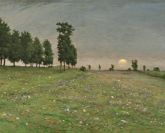 Antoine Chintreuil
(1814 - 1873)
Antoine Chintreuil
(1814 - 1873)
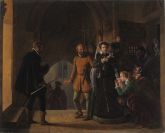 Pierre Révoil
(Lyon 1776 – 1842)
Pierre Révoil
(Lyon 1776 – 1842)
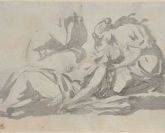 Jacques-Louis David
(Paris, 1748 – Bruxelles, 1825)
Jacques-Louis David
(Paris, 1748 – Bruxelles, 1825)
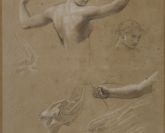 Jean-Baptiste REGNAULT, Baron
Paris, 1754 – Id., 1829
Jean-Baptiste REGNAULT, Baron
Paris, 1754 – Id., 1829
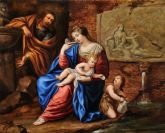 Jacques Stella
(Lyon, 1596 – id., 1657)
Jacques Stella
(Lyon, 1596 – id., 1657)
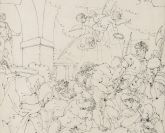 Louis Adrien Masreliez
(Paris, 1748 – Stockholm, 1810)
Louis Adrien Masreliez
(Paris, 1748 – Stockholm, 1810)
 Antoine Berjon
(Lyon, 1754 – id., 1838)
Antoine Berjon
(Lyon, 1754 – id., 1838)
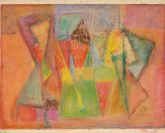 Geer van Velde
(Lisse, 1898 – Cachan, 1977)
Geer van Velde
(Lisse, 1898 – Cachan, 1977)
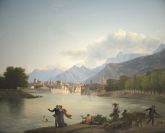 Jean-Joseph-Xavier Bidauld
(Carpentras, 1758 - Montmorency, 1846)
Jean-Joseph-Xavier Bidauld
(Carpentras, 1758 - Montmorency, 1846)
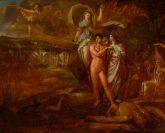 Philippe-Auguste Hennequin
(Lyon, 1762 – Leuze, près de Tournai, 1833)
Philippe-Auguste Hennequin
(Lyon, 1762 – Leuze, près de Tournai, 1833)
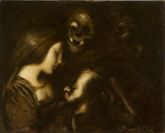 Julien Adolphe Duvocelle
(Lille, 1873 – Corbeil-Essonnes, 1961)
Julien Adolphe Duvocelle
(Lille, 1873 – Corbeil-Essonnes, 1961)
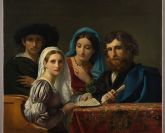 François-Joseph Navez
(Charleroi, 1787 – Bruxelles, 1869)
François-Joseph Navez
(Charleroi, 1787 – Bruxelles, 1869)
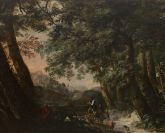 Philippe-Auguste Immenraet
(Anvers, 1627 – id., 1679)
Philippe-Auguste Immenraet
(Anvers, 1627 – id., 1679)
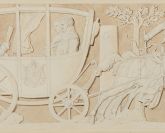 Alexandre-Evariste Fragonnard
(Grasse, 1780 – Paris, 1850)
Alexandre-Evariste Fragonnard
(Grasse, 1780 – Paris, 1850)
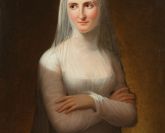 Jeanne-Elisabeth Chaudet
(Paris, 1767 - id., 1832)
Jeanne-Elisabeth Chaudet
(Paris, 1767 - id., 1832)
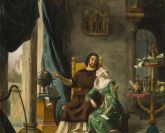 Charles Barthélemy Jean Durupt
(Paris, 1804 - id., 1838)
Charles Barthélemy Jean Durupt
(Paris, 1804 - id., 1838)
 Alexandre-Evariste Fragonard
(Grasse, 1780 - Paris, 1850)
Alexandre-Evariste Fragonard
(Grasse, 1780 - Paris, 1850)
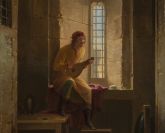 Jean-Antoine Laurent
(Baccarat, 1736 - Epinal, 1832)
Jean-Antoine Laurent
(Baccarat, 1736 - Epinal, 1832)
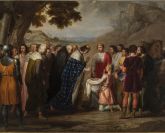 Rafael Tejeo Diaz, dit Tejeo (ou Tegeo)
(Caravaca de la Cruz, Murcie, 1798 - Madrid, 1856)
Rafael Tejeo Diaz, dit Tejeo (ou Tegeo)
(Caravaca de la Cruz, Murcie, 1798 - Madrid, 1856)
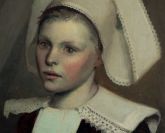 Eric Forbes-Robertson
(Londres, 1865 – id., 1935)
Eric Forbes-Robertson
(Londres, 1865 – id., 1935)
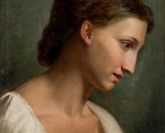 Victor Orsel
(Oullins, 1795 – Paris, 1850)
Victor Orsel
(Oullins, 1795 – Paris, 1850)
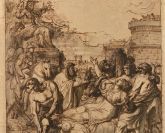 François-Xavier Fabre
(Montpellier, 1766 – id., 1837)
François-Xavier Fabre
(Montpellier, 1766 – id., 1837)
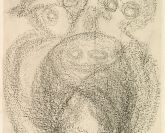 Jean Raine
(Bruxelles, 1927 – Rochetaillée-sur-Saône, 1986)
Jean Raine
(Bruxelles, 1927 – Rochetaillée-sur-Saône, 1986)
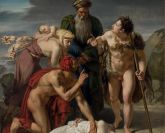 Merry-Joseph Blondel
(Paris, 1781 – id., 1853)
Merry-Joseph Blondel
(Paris, 1781 – id., 1853)
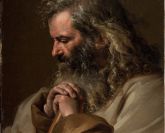 Jean-Jacques Forty
(Marseille, 1743 – Aix-en-Provence, 1801)
Jean-Jacques Forty
(Marseille, 1743 – Aix-en-Provence, 1801)
 François Eisen
(1695, Bruxelles – 1778, Paris)
François Eisen
(1695, Bruxelles – 1778, Paris)
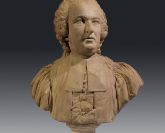 Clément Jayet
(Langres, 1731 - Lyon, 1804)
Clément Jayet
(Langres, 1731 - Lyon, 1804)
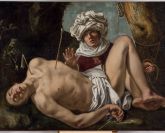 Cornelis De Beer
(Utrecht, 1591 - Madrid, 1651)
Cornelis De Beer
(Utrecht, 1591 - Madrid, 1651)
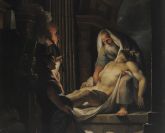 Giovanni David
(Gabella Ligure, 1749 - Gênes, 1790)
Giovanni David
(Gabella Ligure, 1749 - Gênes, 1790)
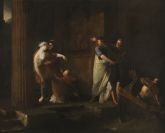 Antoine Dubost
(Lyon, 769 - Paris, 1825)
Antoine Dubost
(Lyon, 769 - Paris, 1825)
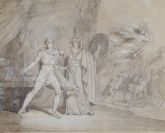 Joseph Denis Odevaere
(Bruges, 1775 - Bruxelles, 1830)
Joseph Denis Odevaere
(Bruges, 1775 - Bruxelles, 1830)
 Henri-Joseph Forestier
(Puerto Hincado, Santo Domingo, 1787 – Paris, 1872)
Henri-Joseph Forestier
(Puerto Hincado, Santo Domingo, 1787 – Paris, 1872)
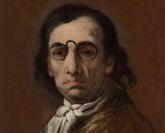 Luca Giordano
(Naples, 1634 - id., 1705)
Luca Giordano
(Naples, 1634 - id., 1705)
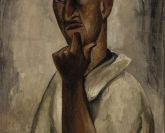 Emile Didier
(Lyon, 1890 - id., 1965)
Emile Didier
(Lyon, 1890 - id., 1965)
 Pierre-Nolasque Bergeret
(Bordeaux, 1782 - Paris, 1863)
Pierre-Nolasque Bergeret
(Bordeaux, 1782 - Paris, 1863)
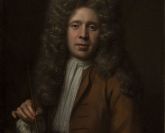 André Bouys
(Hyères, 1656 - Paris, 1740)
André Bouys
(Hyères, 1656 - Paris, 1740)
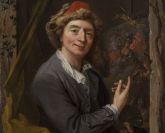 Jacques-François Delyen
(Gand, 1684 - Paris, 1761)
Jacques-François Delyen
(Gand, 1684 - Paris, 1761)
-165x133.jpg) Jean-Jacques de Boissieu
(Lyon, 1736 - id., 1810)
Jean-Jacques de Boissieu
(Lyon, 1736 - id., 1810)
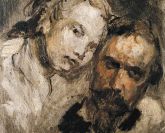 Jean-Baptiste Carpeaux
(1827 - 1875)
Jean-Baptiste Carpeaux
(1827 - 1875)
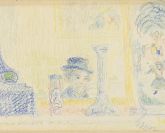 James Ensor
(Ostende, 1860 - id., 1949)
James Ensor
(Ostende, 1860 - id., 1949)
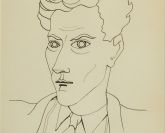 Jean Cocteau
(Maisons-Laffitte, 1889 - Milly-la-Forêt, 1963)
Jean Cocteau
(Maisons-Laffitte, 1889 - Milly-la-Forêt, 1963)
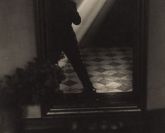 Antoine Demilly
(Mâcon, 1892 – Lyon, 1964)
Antoine Demilly
(Mâcon, 1892 – Lyon, 1964)
 Charles Dukes
actif à Londres entre 1829 et 1865
Charles Dukes
actif à Londres entre 1829 et 1865
 Crikor GARABÉTIAN
Bucarest, 1908 – Lyon, 1993
Crikor GARABÉTIAN
Bucarest, 1908 – Lyon, 1993
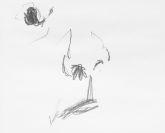 Pierre Tal-Coat [Pierre Jacob]
(Clohars-Carnoët, 1905 – Saint-Pierre-de-Bailleul, 1985)
Pierre Tal-Coat [Pierre Jacob]
(Clohars-Carnoët, 1905 – Saint-Pierre-de-Bailleul, 1985)
 Pierre Molinier
(Agen, 1900 - Bordeaux, 1976)
Pierre Molinier
(Agen, 1900 - Bordeaux, 1976)
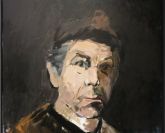 Patrice Giorda
né en 1952
Patrice Giorda
né en 1952
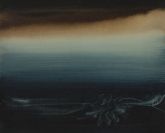 Frédéric Benrath
(Lyon, 1930 - Paris, 2007)
Frédéric Benrath
(Lyon, 1930 - Paris, 2007)
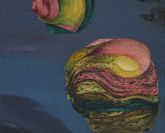 Félix Labisse
(Marchiennes (Nord), 1908 - Neuilly-sur-Seine, 1982)
Félix Labisse
(Marchiennes (Nord), 1908 - Neuilly-sur-Seine, 1982)
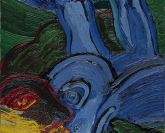 Bengt Lindström
(1925 - 2008)
Bengt Lindström
(1925 - 2008)
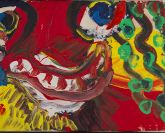 Bengt Lindström
(1925 - 2008)
Bengt Lindström
(1925 - 2008)
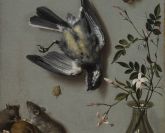 Jean-Batpiste Oudry
Paris, 1686 – Beauvais, 1755)
Jean-Batpiste Oudry
Paris, 1686 – Beauvais, 1755)
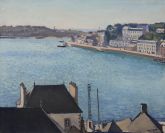 Albert Marquet
(Bordeaux, 1875 - Paris, 1947)
Albert Marquet
(Bordeaux, 1875 - Paris, 1947)
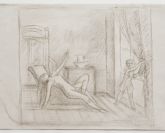 Balthasar K?OSSOWSKI DE ROLA, dit BALTHUS
(Paris, 1908 – Rossinière, 2001)
Balthasar K?OSSOWSKI DE ROLA, dit BALTHUS
(Paris, 1908 – Rossinière, 2001)
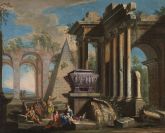 Gioavni Paolo Panini
(Plaisance, 1691 – Rome, 1765)
Gioavni Paolo Panini
(Plaisance, 1691 – Rome, 1765)
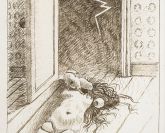 Alberto Savinio
(Athènes, 1891 - Rome, 1952)
Alberto Savinio
(Athènes, 1891 - Rome, 1952)
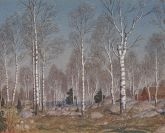 Oskar Bergman
(Stockholm, 1879 - id., 1963)
Oskar Bergman
(Stockholm, 1879 - id., 1963)
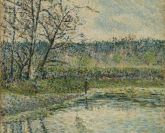 Léon Pourtau
(Bordeaux, 1868 - mort en mer, 1898)
Léon Pourtau
(Bordeaux, 1868 - mort en mer, 1898)
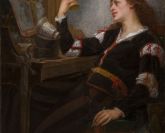 Jean-Baptiste Chatigny
(Lyon, 1834 - id., 1886)
Jean-Baptiste Chatigny
(Lyon, 1834 - id., 1886)
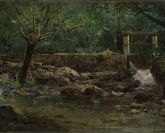 Adolphe Appian
(Lyon, 1814 – id., 1898)
Adolphe Appian
(Lyon, 1814 – id., 1898)
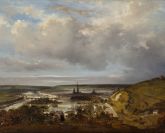 Paul Huet
(Paris, 1803 - id., 1869)
Paul Huet
(Paris, 1803 - id., 1869)
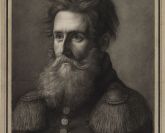 Fabius, dit Fabien Van Risamburgh
(Lyon, 1794 – Saint-Gengoux-le-National, Saône-et-Loire, 1866)
Fabius, dit Fabien Van Risamburgh
(Lyon, 1794 – Saint-Gengoux-le-National, Saône-et-Loire, 1866)
 Jacques-Augustin Pajou
(Paris, 1766 b- id., 1828)
Jacques-Augustin Pajou
(Paris, 1766 b- id., 1828)
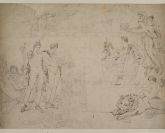 Louis Lafitte
(Paris, 1770 – id., 1828)
Louis Lafitte
(Paris, 1770 – id., 1828)
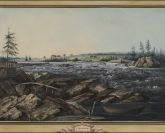 Louis Bélanger
(Paris, 1756 - Stockholm, 1816)
Louis Bélanger
(Paris, 1756 - Stockholm, 1816)
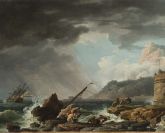 Claude Joseph Vernet
(Avignon, 1714 - Paris, 1799)
Claude Joseph Vernet
(Avignon, 1714 - Paris, 1799)
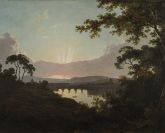 Joseph Wright of Derby
(Derby, 1734 – id., 1797)
Joseph Wright of Derby
(Derby, 1734 – id., 1797)
 Claude-Joseph Vernet
(Avignon, 1714 – Paris, 1789)
Claude-Joseph Vernet
(Avignon, 1714 – Paris, 1789)
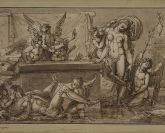 Philippe-Auguste Hennequin
(Luo, 1762 - Leuze, near Tournai, 1833)
Philippe-Auguste Hennequin
(Luo, 1762 - Leuze, near Tournai, 1833)
 Balthasar Klossowski de Rola, known as Balthus
(Paris, 1908 - Rossinière, 2001)
Balthasar Klossowski de Rola, known as Balthus
(Paris, 1908 - Rossinière, 2001)
 Jean-Baptiste Oudry
(Paris, 1686 - Beauvais, 1755)
Jean-Baptiste Oudry
(Paris, 1686 - Beauvais, 1755)
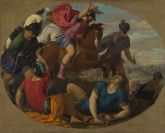 Jean Daret
(Brussels, 1614 - Paris, 1668)
Jean Daret
(Brussels, 1614 - Paris, 1668)
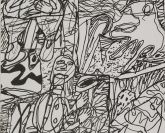 Jean Dubuffet
(Le Havre, 1901 - Paris, 1985)
Jean Dubuffet
(Le Havre, 1901 - Paris, 1985)
 Fabius, known as Fabien van Risamburgh
(Lyon, 1794 - Saint-Gengoux-le-National, Saône-et-Loire, 1866)
Fabius, known as Fabien van Risamburgh
(Lyon, 1794 - Saint-Gengoux-le-National, Saône-et-Loire, 1866)
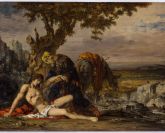 Gustave Moreau
(Paris, 1826 – id., 1898)
Gustave Moreau
(Paris, 1826 – id., 1898)
 Rhin supérieur, entourage de Martin Schongauer ?
Rhin supérieur, entourage de Martin Schongauer ?
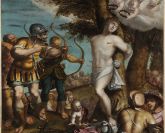 Giovanni Battista Castello, dit Il Bergamasco
(Crema, vers 1526 – El Escorial, 1569)
Giovanni Battista Castello, dit Il Bergamasco
(Crema, vers 1526 – El Escorial, 1569)
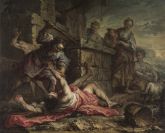 Giuseppe Antonio Pianca
Agnona, 1703 – Milano, 1762)
Giuseppe Antonio Pianca
Agnona, 1703 – Milano, 1762)
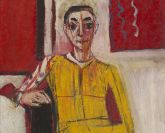 Pierre TAL-COAT (Pierre JACOB)
(Clohars-Carnoët, 1905 – Saint-Pierre-de-Bailleul, 1985)
Pierre TAL-COAT (Pierre JACOB)
(Clohars-Carnoët, 1905 – Saint-Pierre-de-Bailleul, 1985)
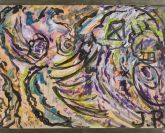 Jean Raine
(Bruxelles, 1927 - Rochetaillées-sur-Saône, 1986)
Jean Raine
(Bruxelles, 1927 - Rochetaillées-sur-Saône, 1986)
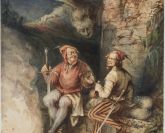 Camille Rogier
(1810-1896)
Camille Rogier
(1810-1896)
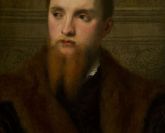 Paris BORDONE
(Trévise, 1500 - Venise, 1571)
Paris BORDONE
(Trévise, 1500 - Venise, 1571)
-165x133.jpg) Maître de l'Incrédulitgé de saint Thomas (Jean Ducamps ?)
Actif à Rome de la fin des années 1920 à 1637
Maître de l'Incrédulitgé de saint Thomas (Jean Ducamps ?)
Actif à Rome de la fin des années 1920 à 1637
-165x133.jpg) Claude Nattiez
(actif à Rome entre 1641 et 1660)
Claude Nattiez
(actif à Rome entre 1641 et 1660)
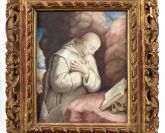 Simon Demasso
(Lyon, 1658 - id., 1738
Simon Demasso
(Lyon, 1658 - id., 1738
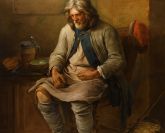 Charles-François Hutin
(Paris, 1715-Dresde, 1776)
Charles-François Hutin
(Paris, 1715-Dresde, 1776)
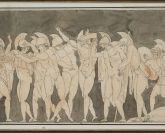 Louis Adrien MASRELIEZ
(Paris, 1748 - Stockholm, 1810)
Louis Adrien MASRELIEZ
(Paris, 1748 - Stockholm, 1810)
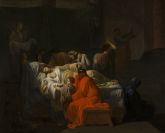 Pierre Peyron
(Aix-en-Provence, 1744 - Paris, 1814)
Pierre Peyron
(Aix-en-Provence, 1744 - Paris, 1814)
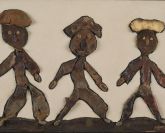 Philippe DEREUX
(Lyon, 1918 - Villeurbanne, 2001)
Philippe DEREUX
(Lyon, 1918 - Villeurbanne, 2001)
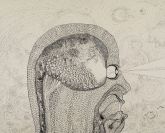 Robert MALAVAL
(Nice, 1937 - Paris, 1980)
Robert MALAVAL
(Nice, 1937 - Paris, 1980)
-165x133.jpg) Bernard REQUICHOT
(Asnières-sur-Vègre, 1929 - Paris, 1961)
Bernard REQUICHOT
(Asnières-sur-Vègre, 1929 - Paris, 1961)
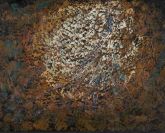 Bernard REQUICHOT
(Asnières-sur-Vègre, Sarthe, 1929 – Paris, 1961)
Bernard REQUICHOT
(Asnières-sur-Vègre, Sarthe, 1929 – Paris, 1961)
 Oskar Bergman
(Stockholm, 1879 – id., 1963)
Oskar Bergman
(Stockholm, 1879 – id., 1963)
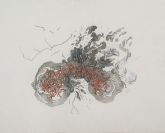 Mélanie DELATTRE-VOGT
(Valenciennes, 1984)
Mélanie DELATTRE-VOGT
(Valenciennes, 1984)
 Helmer Osslund
(Tuna, 1866 – Stockholm, 1938)
Helmer Osslund
(Tuna, 1866 – Stockholm, 1938)
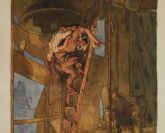 Marcel ROUX
(Bessenay, 1878 – Chartres, 1922)
Marcel ROUX
(Bessenay, 1878 – Chartres, 1922)
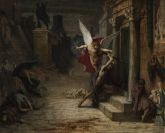 Jules-Elie DELAUNAY
(Nantes, 1828 – Paris, 1891)
Jules-Elie DELAUNAY
(Nantes, 1828 – Paris, 1891)
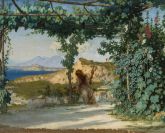 Ernest Antoine Hebert
(Grenoble, 1817 – La Tronche, 1908)
Ernest Antoine Hebert
(Grenoble, 1817 – La Tronche, 1908)
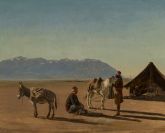 Harald Jerichau
(Copenhague, 1851 – Rome, 1878)
Harald Jerichau
(Copenhague, 1851 – Rome, 1878)
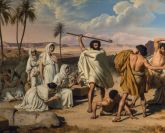 Eugène Roger
(Sens, 1807 – Paris, 1840)
Eugène Roger
(Sens, 1807 – Paris, 1840)
-165x133.jpg) François-Marius Granet
(Aix-en-Provence, 1775 – id., 1849)
François-Marius Granet
(Aix-en-Provence, 1775 – id., 1849)
-165x133.jpg) Alberto GIRONELLA
(Mexico, 1929 – Valle de Bravo (Mexique), 1999)
Alberto GIRONELLA
(Mexico, 1929 – Valle de Bravo (Mexique), 1999)
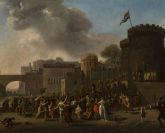 Nicolas-Antoine Taunay
(Paris, 1755 – id., 1830)
Nicolas-Antoine Taunay
(Paris, 1755 – id., 1830)
-165x133.jpg) François-Marius Granet
(Aix-en-Provence, 1775 – id., 1849)
François-Marius Granet
(Aix-en-Provence, 1775 – id., 1849)
-165x133.jpg) Jean-Joseph-Xavier Bidauld
(Carpentras, 1758 – Montmorency, 1846)
Jean-Joseph-Xavier Bidauld
(Carpentras, 1758 – Montmorency, 1846)
-165x133.jpg) Jacques Stella
(Lyon, 1596 – Paris, 1657)
Jacques Stella
(Lyon, 1596 – Paris, 1657)
 Paris BORDONE
(Treviso, 1500 – Venice, 1571)
Paris BORDONE
(Treviso, 1500 – Venice, 1571)
-165x133.jpg) Raoul UBAC
(Malmedy or Cologne, 1910 – Dieudonné, 1985)
Raoul UBAC
(Malmedy or Cologne, 1910 – Dieudonné, 1985)
-165x133.jpg) Robert Malaval
(Nice, 1937 – Paris, 1980)
Robert Malaval
(Nice, 1937 – Paris, 1980)
 Pierre Peyron
(Aix-en-Provence, 1744 – Paris, 1814)
Pierre Peyron
(Aix-en-Provence, 1744 – Paris, 1814)
 Jules-Elie Delaunay
(Nantes, 1828 – Paris, 1891)
Jules-Elie Delaunay
(Nantes, 1828 – Paris, 1891)
 Marcel Roux
(Bessenay, 1878 – Chartres, 1922)
Marcel Roux
(Bessenay, 1878 – Chartres, 1922)
-165x133.jpg) Alberto Gironella
(Mexico, 1929 – Valle de Bravo (Mexico), 1999) 32. El entierro de Zapata y ostros enterramientos [Funeral of Zapata and Other Burials], Elas de Oro II, 1972 A tribute to Zapata Alberto Gironella (1929-1999) had his first exhibition in 1952 in a gallery in
Alberto Gironella
(Mexico, 1929 – Valle de Bravo (Mexico), 1999) 32. El entierro de Zapata y ostros enterramientos [Funeral of Zapata and Other Burials], Elas de Oro II, 1972 A tribute to Zapata Alberto Gironella (1929-1999) had his first exhibition in 1952 in a gallery in
-165x133.jpg) Thomas Blanchet
(Paris, 1614 – Lyon, 1689)
Thomas Blanchet
(Paris, 1614 – Lyon, 1689)
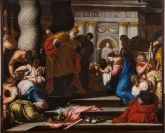 Valentin Lefèvre
(Bruxelles, 1637 – Venise, 1677)
Valentin Lefèvre
(Bruxelles, 1637 – Venise, 1677)
 Laurent Pécheux
Lyon, 1729 – Turin, 1821
Laurent Pécheux
Lyon, 1729 – Turin, 1821
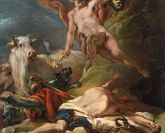 Jean-Baptiste Deshays
(Rouen, 1729 – Paris, 1765)
Jean-Baptiste Deshays
(Rouen, 1729 – Paris, 1765)
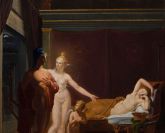 Joseph François Ducq
(Ledeghem, 1762 – Bruges, 1829)
Joseph François Ducq
(Ledeghem, 1762 – Bruges, 1829)
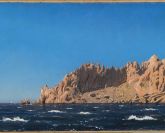 Holger Drachmann
(Copenhague, 1846 – Hornbaek, 1908)
Holger Drachmann
(Copenhague, 1846 – Hornbaek, 1908)
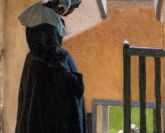 Pelle Swedlund
(Gävle, 1865 – id., 1947)
Pelle Swedlund
(Gävle, 1865 – id., 1947)
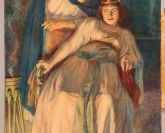 Arthur George Walker
(Londres, 1861 – id., 1939)
Arthur George Walker
(Londres, 1861 – id., 1939)
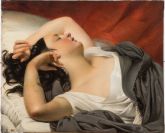 Claude-Marie DUBUFE
(Paris, 1790 – Celle-Saint-Cloud, 1864)
Claude-Marie DUBUFE
(Paris, 1790 – Celle-Saint-Cloud, 1864)
-165x133.jpg) Nicolas Bertin
(Paris, 1668 – id., 1736)
Nicolas Bertin
(Paris, 1668 – id., 1736)
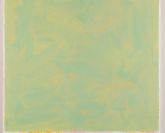 Vincent Bioulès
(Montpellier, 1938)
Vincent Bioulès
(Montpellier, 1938)
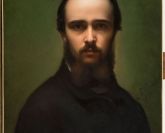 Paul Borel
(Lyon, 1828 – id., 1913)
Paul Borel
(Lyon, 1828 – id., 1913)
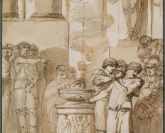 Giuseppe Cades
(Rome, 1750 – id., 1799)
Giuseppe Cades
(Rome, 1750 – id., 1799)
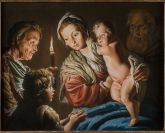 Andreas Joseph Chandelle
(Francfort, 1743-Id., 1820)
Andreas Joseph Chandelle
(Francfort, 1743-Id., 1820)
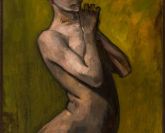 Émilie Charmy
(Saint Etienne, 1978 – Crosne, 1974)
Émilie Charmy
(Saint Etienne, 1978 – Crosne, 1974)
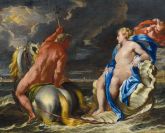 Michel Dorigny
(Saint-Quentin, 1616 – Paris, 1665)
Michel Dorigny
(Saint-Quentin, 1616 – Paris, 1665)
-165x133.jpg) Gustaf Fjaestad
(Stockholm, 1868 – Arvika, 1948)
Gustaf Fjaestad
(Stockholm, 1868 – Arvika, 1948)
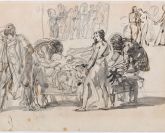 François Gérard
(Rome, 1770 – Paris, 1837)
François Gérard
(Rome, 1770 – Paris, 1837)
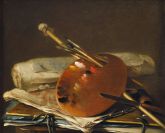 Nicolas Henri Jeaurat de Bertry
(Paris, 1728 – id., vers 1796)
Nicolas Henri Jeaurat de Bertry
(Paris, 1728 – id., vers 1796)
 Paul Jourdy
(Dijon, 1805 – Paris, 1856)
Paul Jourdy
(Dijon, 1805 – Paris, 1856)
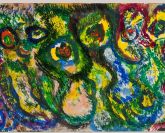 Jean Raine
(Bruxelles, 1927 – Rochetaillée-sur-Saône, 1986)
Jean Raine
(Bruxelles, 1927 – Rochetaillée-sur-Saône, 1986)
 Bernard Réquichot
(Asnières-sur-Vègre, Sarthe, 1929 – Paris, 1961)
Bernard Réquichot
(Asnières-sur-Vègre, Sarthe, 1929 – Paris, 1961)
 Henri Michaux
(1899, Namur – 1984, Paris)
Henri Michaux
(1899, Namur – 1984, Paris)
 Mario Alejandro Yllanes
(Oruro, 1913 – 1946 ?)
Mario Alejandro Yllanes
(Oruro, 1913 – 1946 ?)
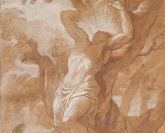 Joseph-Benoît Suvée
(Bruges, 1743 – Rome, 1807)
Joseph-Benoît Suvée
(Bruges, 1743 – Rome, 1807)
-165x133.jpg) Joseph-Benoît Suvée
(Bruges, 1743 – Rome, 1807)
Joseph-Benoît Suvée
(Bruges, 1743 – Rome, 1807)
 James Pradier
(Genève, 1790 – Bougival, 1852)
James Pradier
(Genève, 1790 – Bougival, 1852)
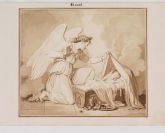 Pierre Révoil
(Lyon, 1776 – Paris, 1842)
Pierre Révoil
(Lyon, 1776 – Paris, 1842)
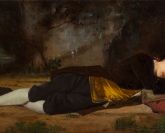 Jean-Baptiste Chatigny
(Lyon, 1834 – id., 1886)
Jean-Baptiste Chatigny
(Lyon, 1834 – id., 1886)
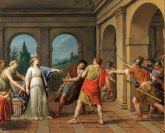 Louis Jean-François LAGRENEE, dit l’Aîné
(Paris, 1725 – Paris, 1805)
Louis Jean-François LAGRENEE, dit l’Aîné
(Paris, 1725 – Paris, 1805)
 Michel-François Dandré-Bardon
Aix-en-Provence, 1700 – Paris, 1783
Michel-François Dandré-Bardon
Aix-en-Provence, 1700 – Paris, 1783
 Hans Ditlev Martens
(Kiel, 1795 – Id., 1864)
Hans Ditlev Martens
(Kiel, 1795 – Id., 1864)
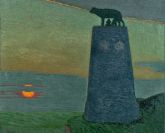 Pelle Swedlund
(Gävle, 1865 – Id., 1947)
Pelle Swedlund
(Gävle, 1865 – Id., 1947)
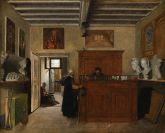 François-Marius Granet
(Aix-en-Provence, 1775 – id., 1849)
François-Marius Granet
(Aix-en-Provence, 1775 – id., 1849)
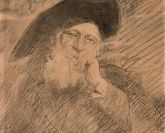 Jeanne Bardey
(Lyon, 1872 - id., 1954)
Jeanne Bardey
(Lyon, 1872 - id., 1954)
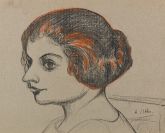 André Utter
(Paris, 1886 - id., 1948)
André Utter
(Paris, 1886 - id., 1948)
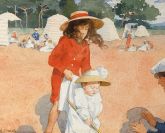 Élisabeth Sonrel
(Tours, 1874 - Sceaux, 1953)
Élisabeth Sonrel
(Tours, 1874 - Sceaux, 1953)
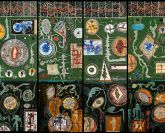 Bernard Pruvost
(Alger, 1952)
Bernard Pruvost
(Alger, 1952)
 Jacques Stella
(Lyon, 1596 - Paris, 1657)
Jacques Stella
(Lyon, 1596 - Paris, 1657)
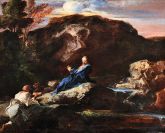 Louis Cretey
(Lyon, before 1638 - Rome (?), after 1702)
Louis Cretey
(Lyon, before 1638 - Rome (?), after 1702)
 Michel-François Dandré-Bardon
(Aix-en-Provence, 1700 - Paris, 1783)
Michel-François Dandré-Bardon
(Aix-en-Provence, 1700 - Paris, 1783)
 François-Marius Granet
(Aix-en-Provence, 1775 - Id., 1849)
François-Marius Granet
(Aix-en-Provence, 1775 - Id., 1849)
 Hans Ditlev Martens
(Kiel, 1795 - Kiel, 1864)
Hans Ditlev Martens
(Kiel, 1795 - Kiel, 1864)
 Pelle Swedlund
(Gävle, 1865 - Id., 1947)
Pelle Swedlund
(Gävle, 1865 - Id., 1947)
 Jeanne Bardey
(Lyon, 1872 - id., 1954)
Jeanne Bardey
(Lyon, 1872 - id., 1954)
 André Utter
(Paris, 1886 – Id., 1948)
André Utter
(Paris, 1886 – Id., 1948)
 Élisabeth Sonrel
Élisabeth Sonrel
 Bernard Pruvost
(Algiers, 1952)
Bernard Pruvost
(Algiers, 1952)
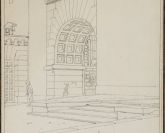 Christoffer Wilhelm Eckersberg
(Sundeved, 1783 - Copenhague, 1853)
Christoffer Wilhelm Eckersberg
(Sundeved, 1783 - Copenhague, 1853)
 Jean-François Forty (actif à Paris, 1775–90)
Jean-François Forty (actif à Paris, 1775–90)
 Thomas Blanchet
(Paris, 1614 - Lyon, 1689)
Thomas Blanchet
(Paris, 1614 - Lyon, 1689)
 Claude Nattiez
(actif à Rome entre 1641 et 1660)
Claude Nattiez
(actif à Rome entre 1641 et 1660)
 Jean Charles Frontier
(Paris, 1701 – Lyon, 1763)
Jean Charles Frontier
(Paris, 1701 – Lyon, 1763)
 Pierre Nicolas Legrand de Sérant
(Pont-l’Évêque, 1758 – Berne, 1829)
Pierre Nicolas Legrand de Sérant
(Pont-l’Évêque, 1758 – Berne, 1829)
 Jean-Baptiste Isabey
(Nancy, 1767 – Paris, 1855)
Jean-Baptiste Isabey
(Nancy, 1767 – Paris, 1855)